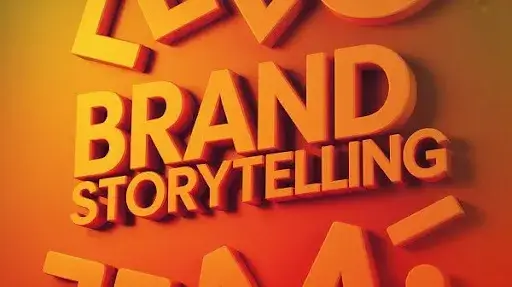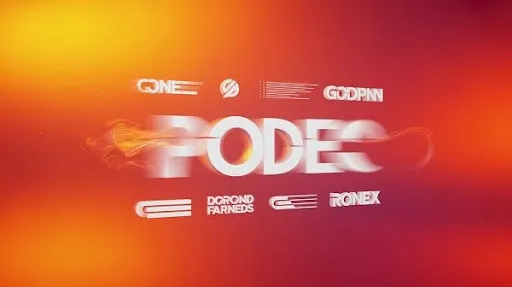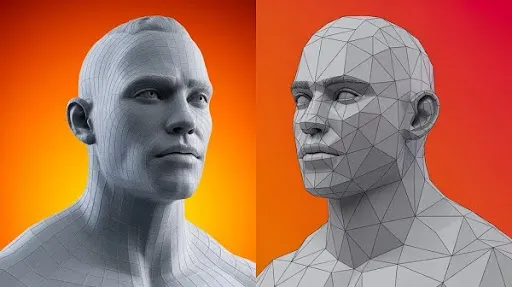A strong brand doesn’t introduce itself; it’s felt before it’s named. That’s the power of a good brand storytelling video. It builds connection without forcing attention, earns trust without lectures, and turns product features into something people care about.
Brands across tech, healthcare, retail, marine, and security are investing in storytelling not because it trends, but because it converts. The goal isn’t to impress viewers. It’s to make them feel understood, seen, or supported. That’s what sticks.
Below are real examples, pulled from actual campaigns, not fictional case studies. Each one shows a different style of narrative impact, from character-driven stories to founder insights to visual demonstrations powered by animation.
This first half covers five standout formats your audience will actually watch, share, and remember.
1. Cvent
Cvent didn’t try to make badges look glamorous. Instead, they used a brand purpose video to show why the design experience matters in the first place. The story centers around event planners who need branded badges without the usual production chaos.
The video walks through the badge design tool visually, showing how organizers can add names, graphics, QR codes, and logos without calling in another department.
No hype, no stock-style narration. The purpose sits in the relief it gives the planner, time saved, stress gone, consistency maintained.
Why It Landed
- Immediate results shown in the first few seconds
- Clear link between identity and functionality
- Demonstrates usefulness through visual progression
- Feels like a solution, not a pitch
This is a good example of how impactful video content doesn’t need drama. It needs clarity and emotional payoff.
2. RS Pro
Instead of a spokesperson or talking head, RS Pro used a small robot as the hero in a story video showcasing precision tools and industrial reliability. The character navigates a maze of wires, panels, and components, plugging and crimping with accuracy that reflects the performance of their products.
This isn’t done for cuteness; it’s a strategy. Turning industrial complexity into a journey keeps the viewer watching. It builds relatability through motion and metaphor.
What Makes It Effective
- Character-driven animation replaces dry explanation
- Visual storytelling stands in for tech jargon
- Movement and pacing mirror real workflows
- Value proposition shown early and clearly
Brands using professional 3D animation services can take notes here. Animation isn’t about style; it’s about making technical content digestible.
3. Folium
Folium didn’t narrate features. They built their founder story video around the challenge farmers face when managing plant environments. Instead of listing sensors, they introduced a problem: growers guessing conditions instead of knowing them.
The video then shows a compact device pulling six layers of environmental data straight from the plant canopy. Charts, microclimates, and heatmaps follow, but only after the viewer understands why it matters.
Why It Connects
- Starts with a field-level issue, not an invention
- Visual data makes features feel practical
- The founder’s vision comes through in problem-solving
- Animated elements clarify complex tech without losing viewers
This is a smart example of how brand story video examples can educate without sounding like a tutorial.
4. Blumira
Blumira didn’t pretend that security teams have time. The video opens with the pressure of nonstop alerts, not the product. That tension sets the stage for an impact story video that solves a real emotional burden.
The animation follows the journey from noise to clarity: pre-tuned threat detection, automated blocking, and response playbooks built into the platform. The support aspect isn’t tacked on. It’s built into the story as the differentiator.
What Stands Out
- Emotional entry point instead of generic openings
- Complex processes are shown visually, step by step
- Removes overwhelm without overselling
- Focuses on time, confidence, and access
This is impactful video content done with empathy, not theatrics. It feels like backup, not marketing.
5. AWS
Instead of listing their capabilities, AWS framed their company mission video around healthcare outcomes. The story isn’t about servers or infrastructure. It’s about how technology flows toward the patient.
From research to data security to digital engagement, each visual ties innovation to someone receiving better care. That’s the thread, not the platform. The tone stays calm, confident, and forward-focused, showing why AWS is trusted without declaring it outright.
Why It Resonates
- Every scene circles back to human impact
- Mission shown through use cases, not slogans
- Visual hierarchy guides viewer attention naturally
- Positions tech as backbone, not headline
This is corporate storytelling without the stiffness. It scales trust with intention, not volume.
6. C-Innovation
C-Innovation didn’t try to romanticize underwater work. Their brand authenticity video leans on raw footage of deepwater operations, technicians at work, and subsea robotics in action. Instead of a narrator explaining capability, the visuals do the talking. You see divers descending, machinery lowering, ships coordinating entire missions without fanfare.
This style doesn’t chase perfection. It builds credibility by showing the grit behind the service. The story is told through environment, scale, and coordination rather than slogans.
Why It Works
- Real footage over polished reenactments
- Scale shown through action, not description
- Trust built with transparency, not taglines
- Engineers and equipment take the lead, not actors
This approach reflects how a brand earns respect in industrial sectors by proving it can handle the job, not by talking about it. Authenticity in storytelling isn’t always sentimental. Sometimes it’s steel, saltwater, and problem-solving.
7. GPSMAP
Garmin’s GPSMAP video doesn’t float around on scenic shots. It’s a product video showcase built around the idea of navigation as a survival tool. Boaters, anglers, and outdoor pros see the interface, touchpoints, weather data, and topography in motion. The zooming, scanning, and waypoint features don’t just flash on-screen; they follow real routes.
The camera angles are intentional. The pacing matches the movement of a vessel or trek. Every second reinforces control, confidence, and accuracy.
Smart Story Decisions
- Functionality demonstrated through real use cases
- Interface footage replaces verbal explanation
- Outdoor environments mirror customer reality
- No dramatic script, clarity carries the story
This is how gear earns trust: by showing how it behaves in the moment someone needs it most. No fluff, no guesswork.
8. Confiz
Confiz used a customer story video to highlight how brands can move beyond generic campaigns and improve personalization. Instead of listing software features, the story unfolds around audience behavior, channel performance, and buying patterns. Charts and animated dashboards make the message easy to digest without drowning in metrics.
The emotional hook? Relief from trying to make sense of scattered data while staying competitive.
What Carries the Story
- Personalization shown in action, not abstraction
- Visual analytics makes insight feel accessible
- Storyline connects marketing problems to customer outcomes
- Automation positioned as empowerment, not replacement
It’s a clean example of turning operational complexity into a relatable journey. The viewer sees themselves in the challenge and the resolution.
9. Varicent
Varicent didn’t open with metrics or voiceover bravado. Their brand values video starts with scattered spreadsheets, mismatched files, and frustration. The story moves from mess to structure in four steps: Connect, Transform, Analyze, Activate.
Each visual simplifies the process instead of overexplaining it. Automation isn’t presented as a luxury. It’s painted as a necessity for teams buried under manual work.
Why It Sticks
- Pain point visualized before the solution appears
- Values tied to function, clarity, efficiency, control
- Scientific animation gives abstract benefits from
- No generic “we believe” narrative tone
This format is great for brands dealing with data, finance, or systems that seem invisible until something breaks. It turns process into promise.
10. nVent CADDY
Instead of a dated legacy reel, nVent CADDY used its company history video to spotlight a specific innovation, the Telescoping Pipe Stand. The story is product-led but tied to decades of practical problem-solving.
You see how the stand assembles out of the box. You see it adjust, lock, and support multiple pipe sizes. The benefit isn’t narrated, it’s visible. Cutting inventory needs by over half is a bold point, and they make it tangible through demonstration.
Why It Hits the Mark
- History told through a current solution
- Practical gains shown with movement, not monologue
- Logistics and cost savings made visual
- Function and legacy blend without forcing it
This is how a company history video can stay relevant: focus on progress, not nostalgia.
Lessons From These Videos
Each of these examples proves something brands forget too often: people remember what they can feel or picture clearly. The format doesn’t matter as much as intention.
Key Takeaways for Aspiring Video Creators and Brands
Story Over Specs
Even with industrial gear or enterprise software, the narrative starts with a human problem.
Visual Logic Over Voiceover Dumping
Walk the viewer through the experience. Let motion do the talking.
Narrow Focus Wins
Each video commits to one central story, not six messages packed into 90 seconds.
Emotional Hooks Aren’t One-Note
Stress, pride, risk, trust, clarity, pick what matches the context.
Format Follows Purpose
A company mission video shouldn’t sound like a product video showcase; the video type needs a matching structure.
The right mix of tone, pacing, visuals, and intent separates a forgettable clip from a brand trust video that sticks.
Frequently Asked Questions
How long should a brand storytelling video be?
Most stay between 60 and 120 seconds. Long enough to create meaning, short enough to hold attention.
What’s the difference between a customer story video and a product video?
A customer story video centers around real outcomes or use cases. A product video showcases features or demonstrations. Both can overlap, but the focus shifts depending on the goal.
Are animation-based videos better for explaining complex services?
For many industries, yes. Professional 3D animation services and motion graphics make abstract systems easier to follow without pausing for explanation.
How do you make a video feel authentic?
Use real settings, real problems, and an honest tone. Avoid scripted energy and exaggerated claims. Even animation can feel grounded if the context is real.
What’s one mistake brands make when producing storytelling content?
Trying to serve every message in one video. A brand authenticity video should not also force a feature dump, culture highlight, and recruitment pitch.
Can small brands use the same storytelling styles as big companies?
Absolutely. The budget doesn’t define impact, clarity, and focus. The right structure can make even a short story video showcasing feel premium.
Final Words
People don’t replay videos that teach them nothing. They replay what feels clear, relatable, and relevant. Every example above used the story as a delivery method for trust, not as a decorative wrapper.
If you’re trying to create a brand storytelling video that leads to action, memory, or loyalty, you don’t need theatrics. You need intent, structure, and visuals that move with purpose.
This is where studios like Prolific Studio, one of the best animation studios in Denver, step in. From C-innovation video projects to brand values video campaigns to character-driven explainers, the goal stays the same: make the message feel real to the people who matter.
When you’re ready to create video content that earns attention instead of asking for it, don’t overthink format. Start with the story your audience already cares about, and build from there.
Related Articles:







